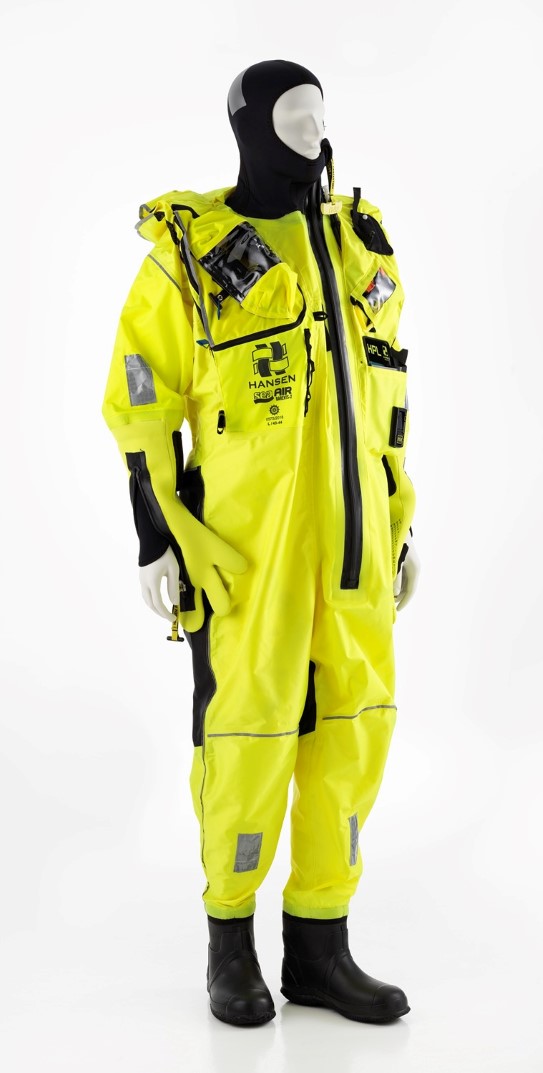Survival suit, SeaAir Barents II, mod. 85336
Hansen Designteam
Transcription
Narrator:
A helicopter takes off from the mainland, heading towards offshore installations far out at sea. The people sitting on board are on their way to work. Each of them is wearing a survival suit like the one you see here, Sea-Air Barents 2.
Jan Stian Gundersen:
Imagine a situation with the helicopter making an emergency landing at sea and capsizing, and then I have to get myself out. What I must do is take hold of the rebreather system, put the air hose to my mouth, and then open the valve that will let me survive on my own air for three minutes underwater.
Narrator:
Jan Stian Gundersen works on a ship that repairs old oil wells along the Norwegian coast. He wears this survival suit travelling to and from work.
Jan Stian Gundersen:
I look around me, and see many of my colleagues floating in the water. We try to get together. Each of our suits has a buddy line. It’s one-and-a-half metres long and we can use it to attach ourselves to each other. Our aim is to float in the sea like a long, luminous worm, so that the rescue helicopters can find us as easily as possible.
Narrator:
The survival suit is lined with a temperature-regulating intelligent material. The outer shell is reflective, insulating and flame retardant. The suit has an emergency personal locator beacon, an emergency breathing system, emergency lights, a sprayhood, an inflatable collar, an integral life jacket, and a lifting strap and open collar for rescue. Also, if you lose consciousness, the suit will ensure that you float on your back.
The suit was developed by its manufacturer Hansen Protection in collaboration with researchers at SINTEF in Trondheim, a city in the central area of Norway.
The project manager and SINTEF senior researcher, Hilde Færevik, explains:
Hilde Færevik:
Naturally the suit is certified in accordance with the international SOLAS requirements for six hours’ survival in cold water. But as researchers, we were interested to see whether the suit could withstand the even more extreme conditions that we find in the Barents Sea in the Arctic Ocean. So we hired SINTEF’s SeaLab and we tested the suit in harsher conditions, at minus 10 degrees Celsius, with waves one metre high, a wind speed of five metres per second, and occasional submersion. And the suit performed extremely well. There was no sign of hypothermia, or of any lowering of the body core temperature to 35 degrees or below.